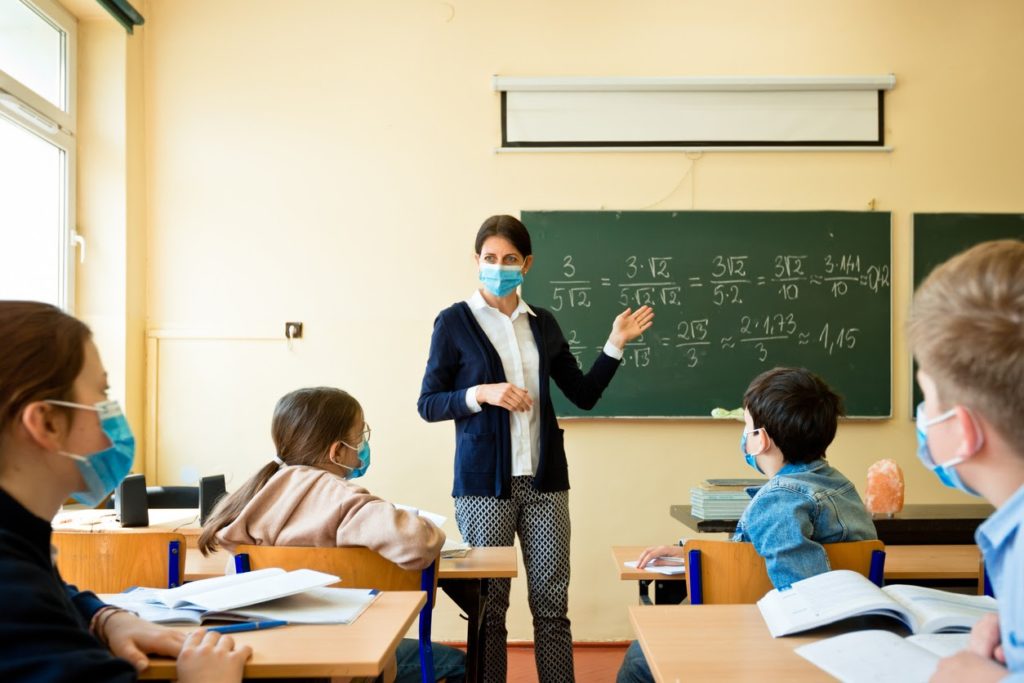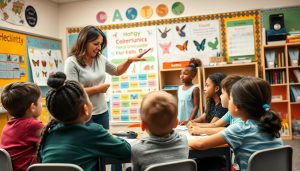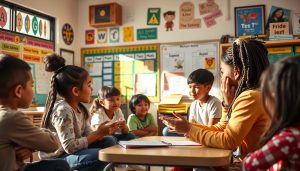Though the COVID-19 pandemic is still ongoing, many teachers will be heading back to the classroom this fall. Educators already have so much to worry about when it comes to the start of school; add keeping yourself and your students safe from COVID-19, and the stress can really skyrocket. The best thing we can do is approach this situation with a healthy amount of caution and follow the advice of the health professionals. Here are several strategies for protecting yourself and your students from COVID-19 this fall.
Follow CDC guidelines
The biggest favor you can do yourself is to follow the advice of the experts. In this case, that’s the CDC. CDC guidelines are simple in theory: Sanitize your classroom and shared equipment frequently, teach students how to wash their hands properly, make sure everyone wears a mask, avoid sharing supplies as much as possible, and maintain social distancing.
Sanitize your classroom
Sanitizing your classroom frequently is a must. Keep disinfectant wipes on hand at all times. If wipes aren’t available, use a 70% alcohol solution to disinfect surfaces. Disinfecting should be done before and after a new group of students enters the classroom, before and after using shared equipment, and before and after eating (if your school will be having students eat in the classrooms). If possible, add disinfectant wipes to your school supply list so kids will have some of their own on hand to help with the process. You’ll definitely want to revamp your classroom structures and routines to allow for cleaning.
Teach students to wash their hands properly
One of the very first things you should touch on this year is hand washing, no matter what age group you teach. Though giving a lesson about the intricacies of hand washing might not be the most exciting topic, it’s important! You can get as creative as you want with it: make a funny video or enlist your class’s help in writing a song that’s at least 20 seconds long (the minimum amount of time to spend when washing your hands). Take time to answer any questions your students have. Then, require hand washing throughout the day, no exceptions. Hand sanitizer is good, but hand washing is best.
Require students to wear a mask at all times
Requiring students to wear a mask is the best way to lower the chance of spreading COVID-19. You’ll most likely need backing from your school on this one, but chances are, they’re already on board. Requiring masks at all times (except when eating or drinking) may be challenging for your students at first. As with anything you do, give students more buy-in by explaining the purpose behind wearing masks while at school. Allow time for students to ask questions and voice their frustrations. Answer their questions and provide empathy, while emphasizing that this is a necessary precaution. Once you explain the policies and expectations, enforce them, no exceptions. This will get the message across efficiently, and your students will become accustomed to it more quickly. Be a model for your students and follow the rules yourself. They’re looking to you on how to behave, so set a good example.
Limit supply sharing
Limiting the frequency of your students sharing supplies in turn, limits the frequency of them being in direct contact with one another. Come up with a list of the essentials that you think your students will need and put them on a school supply list so students and parents will know what to get. Consider providing extra easy-to-lose items in your classroom as well, such as pencils and pens. If students do have to share supplies at any point, make sure that those items are thoroughly sanitized before and after use.
Spread out desks
You’ll want to maximize the space you have in your classroom to ensure social distancing amongst everyone. Spread out desks as much as possible. This may make it harder for some kids to hear and understand the lesson, especially when everyone has masks on. Consider getting a cheap microphone from Walmart so students can hear you better. If that is not an option, continue to move around the room throughout your lessons while maintaining social distancing. Get creative with thiings like group work and student choice. Just because students have to be distanced does not mean they can’t practice working together.
Helping your students feel safe
Kids, like many of us adults, are likely confused, upset, scared, and angry about what’s going on. But they don’t have to be reminded of that at school! Spread positivity throughout your building and within your classroom to help relieve student stress as well as your own. You’re probably used to decorating your classroom each year. This year, pay extra attention to the messages your decorations send. You want to spread messages of positivity and hope. Let your students know that there is a light at the end of this tunnel, no matter how long it may seem.
Planning for remote learning
One of the most frustrating parts of the pandemic is that it seems impossible to plan anything. Therefore, we must plan FOR anything. There is a chance that we could be thrust back into remote learning at any point. Last time it happened, we had little to no warning and were unprepared. Now we have the chance to prepare ouselves and our students by planning a remote-learning alternate for our lessons, at least for the foreseeable future. This will give you, your students, and your students’ families peace of mind that there is a plan if in-person learning is no longer possible. Additionally, it’s a good idea to familiarize your students with your remote-learning platform and to show them how to access necessary content and lessons online. Communicate with students and set clear expectations about what your class will look like in person and online in the event you go back to remote learning.
We know this year will be a challenge, but by utilizing these tips, you will feel more at ease when it comes to keeping your classroom safe. Remember to be a positive role model for your students in both safety procedures and mindset. Make sure students and families know you are there for them, regardless if the learning is in person or remote. We are all in this together and we can still make it a great school year.
As a K-12 teacher, it’s important to continue your professional development, and Credits for Teachers can help. CFT provides self-paced online Professional Development courses for K12 teachers. Teachers who take our courses receive graduate credit from our university partner that can be used for salary advancement or license renewal. Learn more about the courses we offer today!




